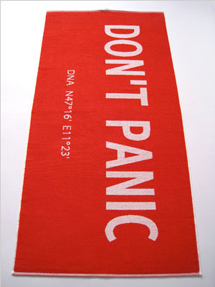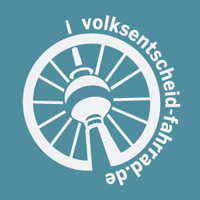Discover the city. Follow the street artists through the districts Kreuzberg and Friedrichshain. Detect their amazing works on the blind walls. The city as the best showroom you can get.
Or visit the Stalinallee to see the flagship building project of former East Germany from the 50s. The palaces of the workers of the capital and the boulevard for the parades of military. An impressing walk through the traces of the history.
Download the app EveryTrail for free and buy for the smart price of 1,59 Euro or 1,99 US Dollar the guide.
Berlin – Street art, artworks in public space
Graffiti, Paintings, Paste-Ups, Stencils in the Berlin districts Kreuzberg and Friedrichshain

From the 70s to 1989 the Berlin Wall was on the west side the area for graffiti, paintings and wall newspapers. Since the reunification of Germany, Berlin has attracted attention to international street artists, making it one of Europe’s street art strongholds. Ramshackle buildings and blind walls gave rise to a vibrant street art scene. You will find works mainly while you stroll through the districts Mitte, Prenzlauer Berg, Kreuzberg and Friedrichshain.
In the last years, the street art were even topic of some exhibitions in Berlin, like Backjumps 3 in 2007. But of course the city is in this case the best showroom. With the risk that you wake up one morning and the artwork is gone.
For this tour I have chosen mainly the big works which often use the entire wall of a building. There is a good chance that they will stay. Other spots have even the concept of change, like a wall named ‘Diary’. While classical sights have an address street art often uses hidden spaces or rear sides of buildings. This guide will bring you along…
Preview and download: Berlin – Street art, artworks in public space
Berlin – Karl-Marx-Allee / Stalinallee
The Stalinallee was a flagship building project of East Germany to represent the new country.

The Karl-Marx-Allee is a monumental socialist boulevard built by the GDR between 1951 and 1964 in Berlin. The boulevard was named Stalinallee between 1949 and 1961, and was a flagship building project of East Germany’s reconstruction programme after World War II. It was designed by the architects Hermann Henselmann, Hartmann, Hopp, Leucht, Paulick and Souradny to contain spacious and luxurious apartments for plain workers, as well as shops, restaurants, cafés, a tourist hotel and an enormous cinema (the International). Today the boulevard is named after Karl Marx.
The avenue, which is 89m wide and nearly 2 km long, is lined with monumental eight-storey buildings designed in the so-called wedding-cake style, the socialist classicism of the Soviet Union. At each end are dual towers at Frankfurter Tor and Strausberger Platz designed by Hermann Henselmann. Most of the buildings are covered by architectural ceramics.
On June 17, 1953 the Stalinallee became the focus of a worker uprising which endangered the young state’s existence. Builders and construction workers demonstrated against the communist government, leading to a national uprising. The rebellion was quashed with Soviet tanks and troops, resulting in the loss of at least 125 lives.
Later the street was used for East Germany’s parades, like the annual May Day parade, National Day (october, 7th) and the day when the wall was set up (august, 13th) featuring thousands of soldiers along with tanks and other military vehicles to showcase the power and the glory of the communist government.
(Source: wikipedia)
If you walk along the Karl-Marx-Allee like I suggest starting at the Alexaderplatz you will see first the newer part of the boulevard which was built from 1959-64. The dwelling houses are built in a cheap and efficient way from pre-made elements. The pavilions for shopping, food and culture around the corner of the Schillingstreet are designed in a typical style of the 50s and 60s. While this part has the enormous width of 120m it was used for the parades of East Germany.
The second part starting around the Straussberger Platz is the classical part which is well known as ‘Stalinist architecture’. It was mainly built in just two years between 1951-53. At that time it was the flagship dwelling project of East Germany. And it should show in what conditions the new country, the GDR should be set up – Palaces for the workers.
Enjoy the tour.
Preview and download: Berlin – Karl-Marx-Allee / Stalinallee
UPDATE: The guide, Berlin – Karl-Marx-Allee / Stalinallee is featured in the newsletter / blog by everytrail.





